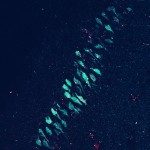Lien vers HAL – pasteur-03845354
Lien DOI – 10.1007/978-1-0716-2569-9_8
Translational Research Methods in Neurodevelopmental Disorders, 185, Springer US, pp.135-158, 2022, Neuromethods, 978-1-0716-2569-9. ⟨10.1007/978-1-0716-2569-9_8⟩
The development of humanized neural chimeric mouse models consists in grafting human neuronal progenitor cells (NPC) or differentiated neurons derived from induced pluripotent stem cells (iPSC) into the mouse brain at different timepoints. As the main features of cortical networks and their alterations during brain development cannot be reproduced in vitro, these in vivo models have been used to investigate the mechanisms by which reprogrammed human neurons and non-neuronal cells integrate and migrate into the mouse brain at early stages of brain development and display functional activities several months after their grafting. Here, we describe the neonatal grafting technique of human NPC which we use in our laboratory. We also present a new method based on the grafting of human NPC into the brain of mouse embryos, in utero. A third method consists in the stereotaxic grafting of human NPC into selected brain regions of adult mice. The iPSC technology combined with the use of chimeric mouse models offers numerous possibilities to study human neural development within wellcontrolled and defined temporal windows and to model neuropathological disorders.

